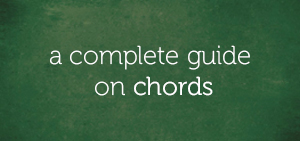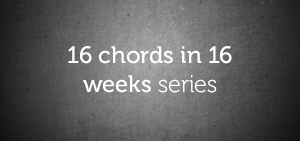I’ve gotten a lot of e-mails about primary and secondary chords so I wanted to take this time to explain them.
Every key has what we call “primary” chords and “secondary” chords.
You may already know the primary chords…
They’re simply the 1, 4, and 5 tones of any scale.
For example, in the key of C major:
- The first tone of the scale is C
- The fourth tone of the scale is F
- The fifth tone of the scale is G
We simply play major chords on each of these tones. Bam! There’s your primary chords.
The secondary chords are all the other ones.
That leaves the 2nd, 3rd, 6th, and 7th tones of the scale.
(This post can technically be over but I want to go a little further in explaining secondary chords).
Every major key has a relative minor key. I talk about relative minors in this past post.
Like in C major, the relative minor is “A.” It’s basically the 6th tone of the scale (or you can count backwards two scale tones… “C > B > A”).
I said all that to say this…
3 of the 4 secondary chords are basically relative minors of the primary chords. Let me break it down…
We already know that “A” is the relative minor (6th tone) of C major so that takes care of the C major primary chord.
What is the relative minor of F major? It’s D!
And the relative minor of G major? It’s E!
C > A
F > D
G > E
Like I said above, you can think of this as basically 2 scale tones down from any primary chord.
Take C major for example…
- Go down two scale tones — B is one, A is two.
- “A” is the relative minor.
F major…
- Go down two scale tones — E is one, D is two.
- “D” is the relative minor.
G major…
- Go down two scale tones (and I’m still referring to the C major scale since we’re talking about primary chords from the C major scale but even if you used the G major scale, you’d arrive at the same tone).
- “E” is the relative minor.
Why is this important?
Relative minors and majors have a very strong connection. They share the same key signature. They have the same notes in their scales. Heck, their chords are pretty much the same.
Want me to prove it to you?
[Cough Cough]. It’s simply “A + [C major]”
A + C + E + G = A minor 7 chord
It’s pretty much “D + [F major]”
D + F + A + C = D minor 7 chord.
Yup, you guessed it! “E + [G major]”
E + G + B + D = E minor 7 chord.
So what does all this mean?
Simply put, whenever you want to make things more interesting, throw in the right secondary chords!
Yes, most songs can be played with just primary chords (the “1,” “4,” and “5”). That’s true!
But if you want to get more interesting, you start throwing in these secondary chords.
And now that you know how the secondary chords relate to the primary chords, you can start substituting certain chords for others (***hint hint***).
Until next time —







Comments on this entry are closed.